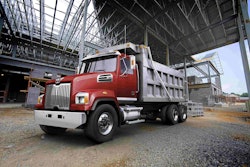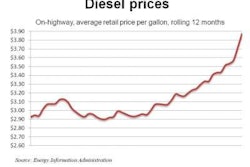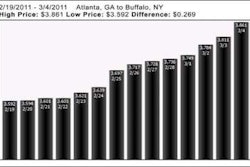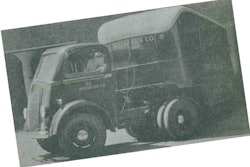According to the INRIX National Traffic Scorecard 2010 Annual Report released Tuesday, March 8, analysis of traffic on major highways in the nation’s 100 largest metropolitan areas shows:
• Population growth combined with increases in interstate commerce spurred by economic recovery are fueling increases in traffic congestion and travel times nationwide;
• New analysis identifying the nation’s worst traffic corridors finds that drivers traveling our nation’s 10 worst traffic corridors annually spend an average of one month idling in traffic;
• 11 straight months of increases in traffic congestion on our nation’s roads translating into an average 10 percent increase in travel times for drivers; and
• Freight traffic is back on the move as consumers begin spending again.
Also according to the traffic scorecard:
• Expect gridlock across urban America as jobs return. Despite only modest employment gains in 2010 as the economy shows signs of recovery, travel times increased by 10 percent. In fact, 70 of the top 100 most populated cities in the United States are experiencing increases in traffic congestion; nine U.S. cities already have surpassed their 2007 peak. Recent government reports and economists’ forecasts show employment rebounding to 2007 levels the next year, adding 9 million more daily work trips this year, resulting in gridlock on the national road network;
• Traffic congestion in America’s cities is a reflection of local economies. Cities on the road to recovery are experiencing the largest return to traffic congestion. However, traffic congestion is outpacing job creation in these cities, signaling a return to gridlock when employment returns to pre-recession levels. Internationally, traffic congestion in America’s cities isn’t as bad as Europe, but across all European and American cities analyzed, Los Angeles has the worst traffic of them all; and
• The stimulus repaved America, but did not alleviate congestion. Americans traveling the nation’s worst traffic corridors experience up to 80 hours of delay on the afternoon commute alone. More than 500 miles of roads were congested 25 hours a week or more; nearly 200 of those miles were congested 40 hours a week or more – higher than any previous year. Drivers traveling across the nation’s top 10 worst traffic corridors during rush hour could ride a bike faster than their car could take them to work averaging speeds of only 3 mph during congested periods. Five of the top 10 worst traffic corridors are in Los Angeles.
The Scorecard also provides a comparison of 2010 traffic congestion in U.S. cities versus major cities in the U.K., France and Germany. Additionally, leveraging analysis from its data warehouse, INRIX provides a snapshot of commercial freight traffic concentration across America. To download the complete report, go to http://scorecard.inrix.com/scorecard/














